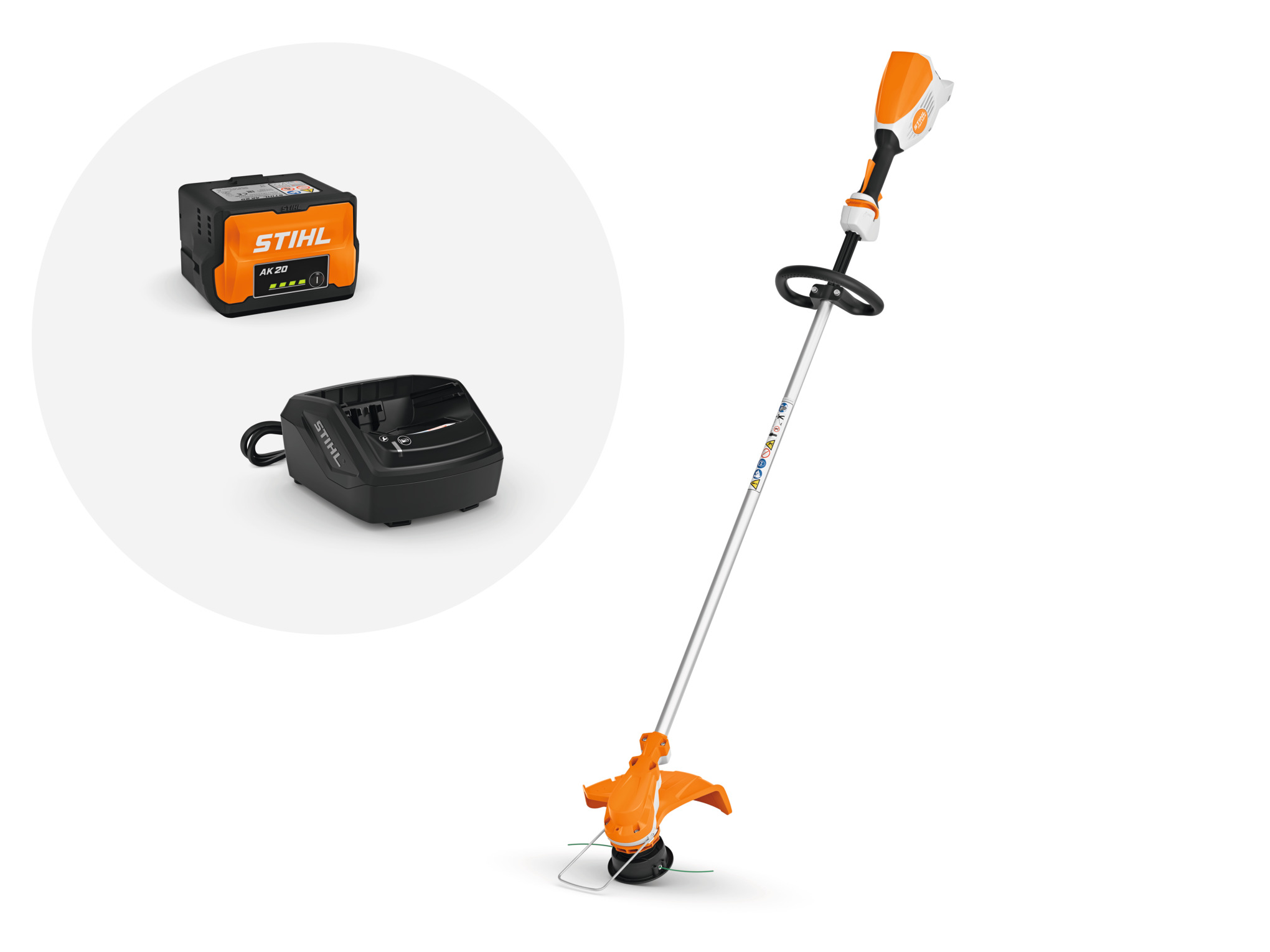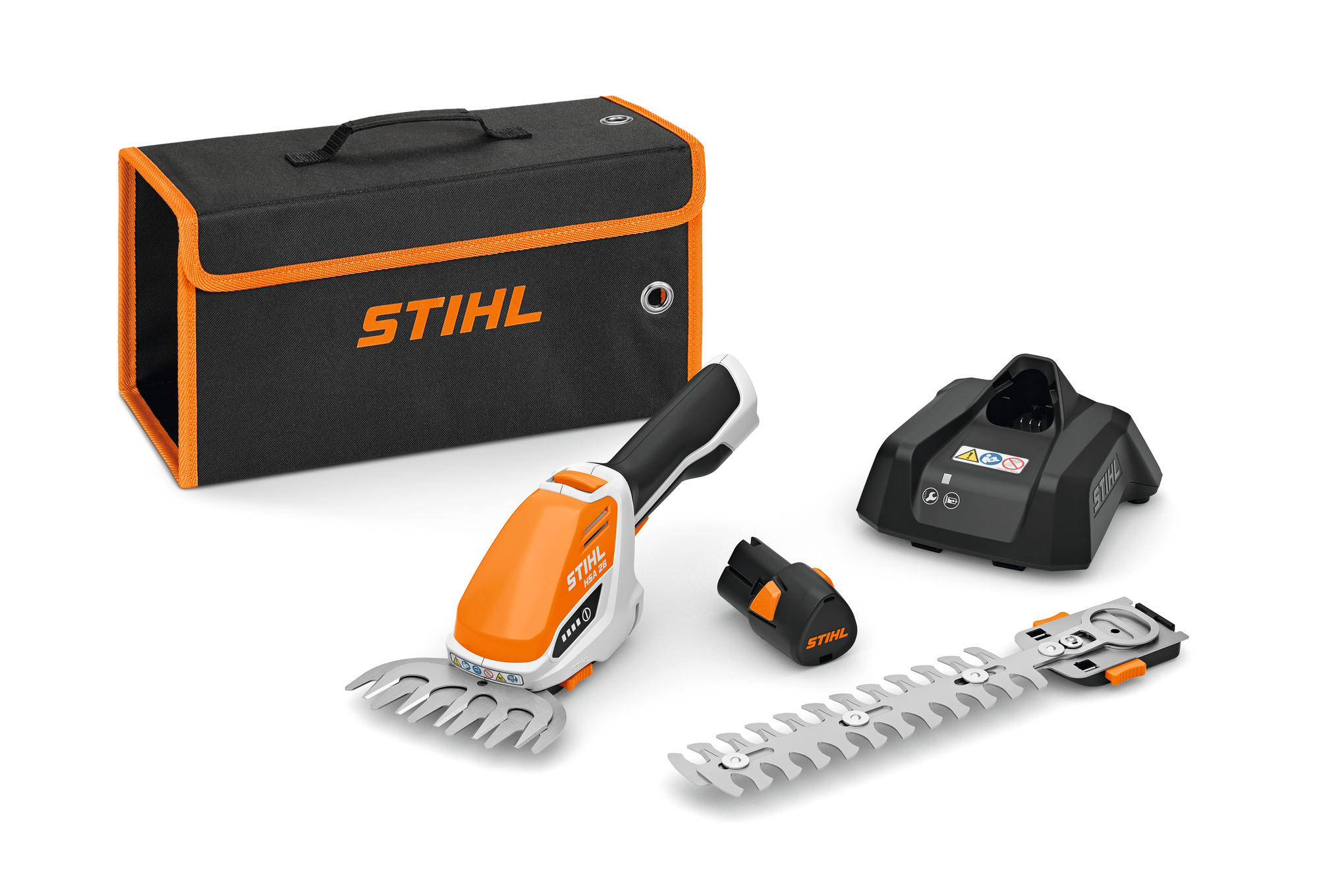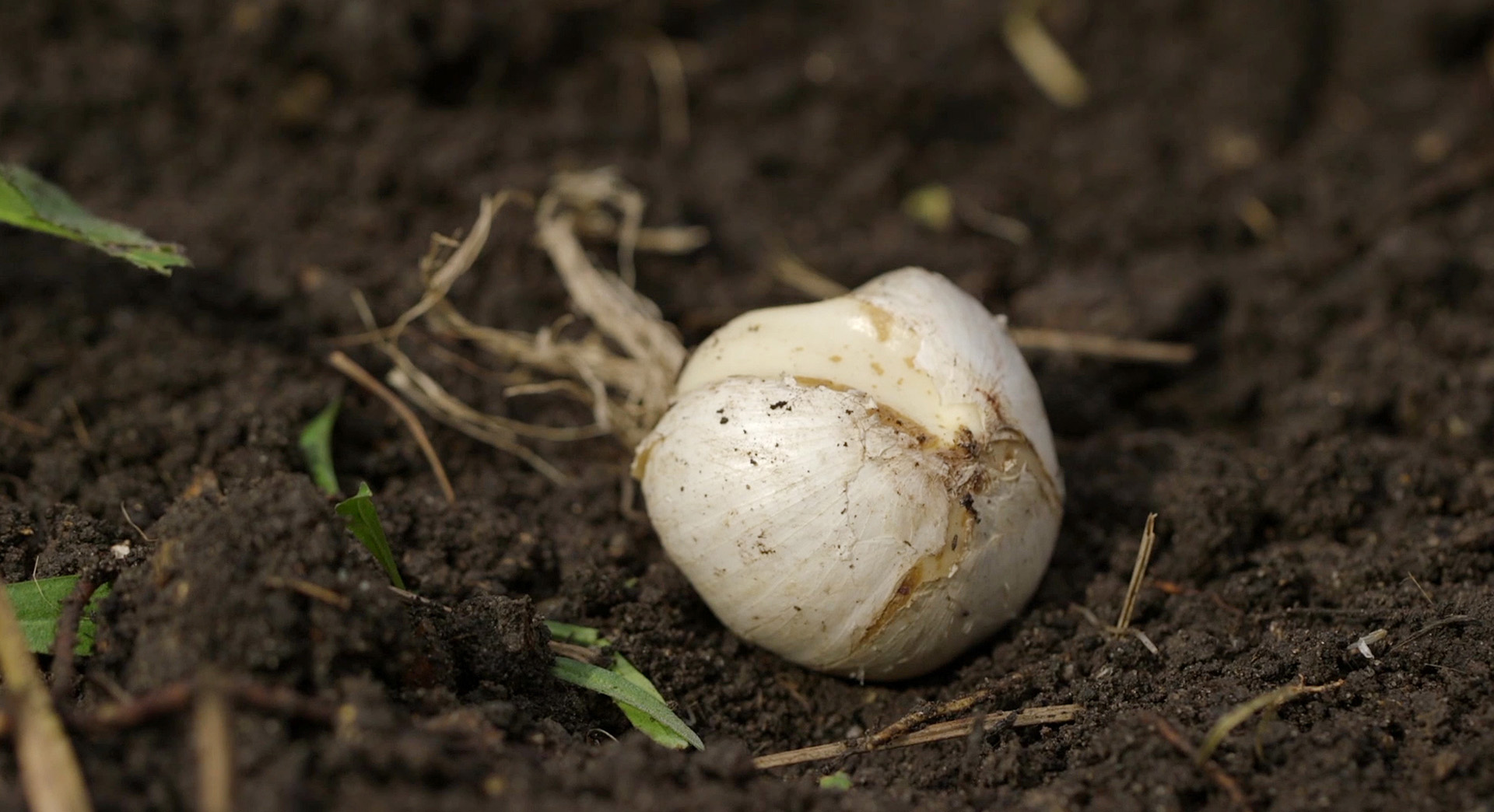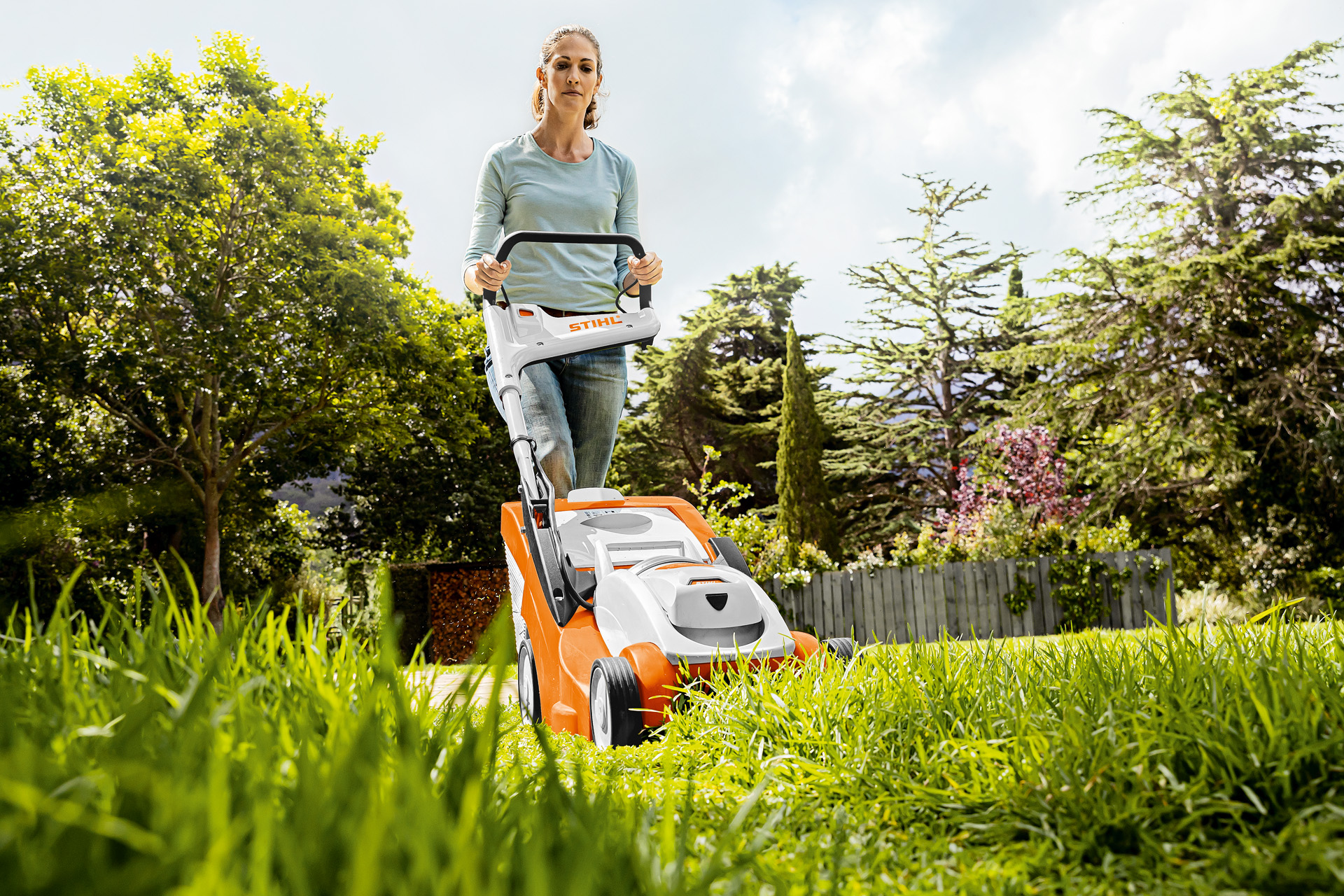Tackling an overgrown garden
We show you how to tidy an overgrown garden in our step-by-step guide.
12.08.2025

Overview: tackling an overgrown garden
- An overgrown garden is a challenging project, but with a well-structured approach, it is very manageable.
- Before clearing the garden, you should draw up a plan. Then you’ll know what you want to change and how you need to do it.
- The most important steps are clearing rubbish, mowing the lawn and trimming back any excess growth. This includes pruning trees and bushes, trimming back hedges and digging up unwanted plants.
- Regular maintenance is vital to keep your garden in great shape and to stop it from becoming too overgrown.
The first step in taming an overgrown garden is to make a plan. Decide what you want the finished garden to look like and use that to work out what can stay and what needs to go. Take everything you don't want out first and then shape what's left, replanting any cleared areas with suitable plants.
The main things that contribute to a garden looking overgrown or untidy are long grass, weeds and hedges. Start by mowing the lawn and removing weeds, leaving the roots attached so they can't reestablish themselves. Trees and hedges often need to be pruned or trimmed and new shrubs rejuvenated before new beds can be created.
Clearing an overgrown garden is a lot easier with the right tools. First remove any rubbish or debris that might get in the way, and then use a good brushcutter to cut back any overgrown plants at ground level. Be sure to dig out weeds at the root to prevent regrowth. A hedge trimmer will make light work of getting most things above ground level under control, but for thicker branches a pruner is a very useful tool. Trees and shrubs often benefit from being cut right back, but it's worth looking for specific advice to make sure you're pruning at the right time and in the right way.
Step 1: Get an overview and make a plan
Walk around your overgrown garden to get a detailed view of what you have on your hands, asking what plants are growing where, what you want to keep, and what you would like to change as you begin to tame your overgrown garden.

Stinging nettles and abundant wild growth should be pushed to the side with a stick, revealing any trip hazards, boulders or wire mesh at ground level. Mark these clearly with sticks or stakes. Check if any trees and shrubs need to be pruned or thinned, keeping an eye out for rotten or dead branches. Consider what really needs to be removed; in many cases, pruning is enough to create the space and look you want and to enable better light penetration for shrubs and flowerbeds. Identify any plants and shrubs that you wish to relocate.

Get it in hand with a garden plan
For larger overgrown spaces, we recommend you draw out a proper plan for how you wish to plant the garden. Your drawing should be to scale and include all buildings, areas, paths and shrubs. You should also indicate which areas are shaded through the day – this will help you find the right spot for each plant in your garden.
Step 2: Assemble your tools
You will need the following equipment to clear your overgrown garden:
- Tools: clearing saw or brushcutter, garden pruner or chainsaw, garden shredder, secateurs, pruning shears, hedge trimmer, hand saw for overhead work, spade, fork, rake, lawnmower if needed. (Please note that the GHE 140 shredder pictured is not available in Great Britain.)
- Other equipment: wheelbarrow, garden waste sacks, basket, long piece of tear-proof rope.
- Protective clothing: Gloves, safety glasses/visor, ear protection, safety boots.

Using powerful tools helps you get the job done quickly, but it's very important to wear the appropriate protective gear while using them. This is especially true when working with a chainsaw or any other cutting equipment. You can find the recommended PPE for all of our products in the operating instructions.. In general you should always be wearing some kind of hand, eye and foot protection, and a helmet for any work above chest height. Check your owner's manual to see if ear protection is required, and if you are using a chainsaw, you should always wear cut protective trousers, and boots too.
Before you use your machine for the first time, you should familiarise yourself thoroughly with the tool and ensure it is in good working condition before each use. Your local STIHL Approved dealer will be happy to prepare your tool for its first use and will also advise you on models and sizes of protective clothing that you can try. Please remember that personal protective equipment is no substitute for safe working techniques.
Step 3: Clear rubbish, weeds and wild overgrowth

Tidying up the garden
Start by tidying the garden and removing any rubbish. Carry a basket, bin bag or wheelbarrow as you walk through your overgrown garden space, collecting any rubbish such as plastic plant pots, broken terracotta pieces or discarded plant stakes.

Mowing in an overgrown garden
Mow the lawn using a brushcutter or lawn mower. Once that’s done, it will be much easier to see where further work is needed. This is also when your marker sticks pay off; take care as you mow and trim around them, and then rake up cuttings.
STIHL tip: If you are using a clearing saw or brushcutter to clear overgrowth, work systematically in rows, clearing a path from one side to the other.

Weed clearance and removing stalks and stumps
Now it is time to remove the weeds, which should really start to make a difference in your overgrown garden. Weed by hand where possible, though you may want to use a power tool first to cut tall weeds to a manageable height. Non-woody overgrowth is best handled using a clearing saw or brushcutter fitted with a blade. Crop everything to around 15 centimetres tall, cutting down in stages if necessary. Use the shredder to chop up the plant waste.
Next, pull any remaining stems out of the soil. If it's difficult to remove, loosen the soil around it using a fork. If that doesn’t work, use a spade to dig out the whole plant, making sure you pull up the root ball; otherwise, the weed will quickly reappear.
Step 4: Get shrubs into shape
The progress you’ve made in your overgrown garden should be very clear to see. The next step is to cut trees and shrubs into shape, pruning and thinning them.

Trimming trees and hedges
Dig up any old tree stumps with a spade. Small shrubs that you don’t want are easy to remove completely – cut them off close to the soil, then pull out the roots. Looking at the trees and shrubs you do want to keep, remove any broken branches by cutting them close to the trunk or main stem.
Next, examine and prune larger plants. Many plants send out suckers from their roots, causing new offspring plants to pop up elsewhere and eventually become mature and independent. This is great for woodland propagation but rarely ideal in a garden. Plants prone to suckering include brambles, lilac, robinia, poplar and ornamental cherry trees. It is usually better to dig suckers up than cut them back.
For hedges, a hedge trimmer is a great way to prune efficiently. You can find detailed information on trimming hedges here. Lastly, put all your trimmings through the garden shredder.

Delimbing trees
If you have trees that create too much shade, have excessively dense foliage or have branches crossing over one another, you can use a cordless pole pruner to thin out the crowns. Always remove whole branches right down to the trunk or originating branch rather than just cutting all branches to a uniform length. This helps avoid too much thin, shooting “brush growth” appearing at the cuts the following year. Rotten, old or diseased twigs and branches should be removed immediately. You will recognise these by their wrinkled bark – they are often also darker than other branches and covered in moss or algae. Finally, use a chainsaw to trim all of the branches.
STIHL tip: There are legal considerations that must be taken into account when trimming trees and hedges: in the UK, the Wildlife and Countryside Act of 1981 states that you may not cut a hedge or tree if doing so will damage or disturb a nest. Always makes sure you check for active nests before trimming any hedges, particularly in the bird nesting season (typically between March and August).

Trimming and tapering bushes
Multi-stemmed bushes such as redcurrant or amelanchier are characterised by having many individual shoots that grow from the earth. You can trim these or taper the shape of the whole plant by cutting excess growth 10 cm above the soil.
STIHL tip: A pole and some rope can help you when clearing overhanging brambles and other bushes: stick the pole into the soil, bend the brambles to the side and secure everything with the rope. The area around the brambles will then become clearer so you can more easily get to the base of the plant.
Step 5: Create new beds and areas

Edges and borders add structure
Determine where the edges, borders and flower beds will be. Clearly defined areas make the difference between an overgrown garden and a tidy one. Mark out the edges of the lawn and cut along them with a spade.
STIHL tip: If you like a bit of wildness and don’t want your garden to be too orderly, there is a little trick you can try. Spread a thick layer of mulch around specific shrubs and bushes; this will keep them weed-free and well-defined, while you can leave other areas to grow rampant if you wish.
Replanting and relocating shrubs and flower beds
Now you can sort out the remaining shrubs. Divide any that have become too large or bushy by digging them up and splitting the root ball into multiple sections. Plant one part back in the original location and move the other parts to new places as per your garden plan. Close up any gaps in the planted areas and add new plants as desired.
Enjoy your new garden
You did it! You managed to whip that overgrown garden into shape! Now it’s time to bask in the glow of your achievements as you enjoy your new outdoor space!

One last tip:
Remember that your garden needs regular maintenance – mowing the lawn, weeding, and annual pruning of shrubs and bushes. Otherwise, your garden will become overgrown again as time passes.





